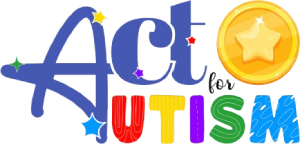Understanding the Power of Communication
For many children on the autism spectrum, communication can be one of the biggest challenges. Some children may not speak at all, while others might use limited words, repeat phrases (echolalia), or struggle to understand the back-and-forth flow of conversation. But here’s the good news: speech therapy can be a game-changer.
Speech and language therapy isn’t just about “talking” — it’s about helping a child connect with the world, express needs, share joy, and build meaningful relationships. Whether a child is non-verbal, semi-verbal, or verbal with difficulty, speech therapy is tailored to meet them where they are.
Why is Speech Delayed or Atypical in Autism?
Children with autism may experience:
● Delayed speech milestones (late talking or no speech)
● Lack of response to name
● Limited use of gestures (like pointing or waving)
● Echolalia (repeating what others say without understanding)
● Difficulty in using language socially (pragmatic language)
● Flat tone or unusual rhythm of speech
● Poor understanding of instructions or questions
This happens due to differences in neurological processing, sensory integration, social cognition, and sometimes, co-occurring conditions like apraxia of speech.
What Does Speech Therapy Do in Autism?
In speech therapy , therapist works on several aspects of communication:
1. Receptive Language
● Understanding words, instructions, and questions
● Improving attention and listening
️ 2. Expressive Language
● Using words or alternative methods (like PECS or AAC) to communicate
● Building vocabulary
● Making meaningful sentences
3. Pragmatic Language (Social Communication)
● Taking turns in conversation
● Understanding emotions, facial expressions, and body language
● Learning to greet, request, or ask questions
Early Signs That Speech Therapy is Needed
If your child:
● Doesn’t respond to their name
● Isn’t using words by 18–24 months
● Struggles with eye contact or gestures
● Repeats the same phrases without context
● Can’t follow simple instructions
● Is always crying or pulling your hand to show what they want
…it’s time to consider a autism evaluation.
Real-Life Progress: What Can You Expect?
Speech therapy is not a quick fix, but with consistent sessions and parent involvement, real progress happens.
A child who once cried instead of asking for food may learn to say “I want juice.”
A child who only echoed cartoons may begin to answer questions or call “mama” meaningfully.
A non-verbal child may begin using pictures to communicate clearly.
Over time, these children may enter mainstream schools, follow instructions, and engage in daily conversations — all with the help of a dedicated speech therapy program.
Role of Parents in Speech Development
The biggest success stories always involve active parent participation. Here’s how you can support your child’s speech goals:
● Repeat and model clear speech at home
● Encourage turn-taking during play
● Use visual supports and routine-based vocabulary
● Reduce screen time and increase real-world interactions
● Celebrate every small win — one word today can be a sentence tomorrow!
Final Thoughts: Every Voice Matters
Speech therapy in autism is about unlocking potential. It’s not just about talking — it’s about being heard. Whether it’s a word, a picture, or a gesture — helping a child find their voice is one of the most empowering gifts we can offer.If you’re a parent wondering whether your child will ever speak — please know that with the right support, consistency, and patience, communication is always possible. It may look different for each child, but the journey is worth it.



